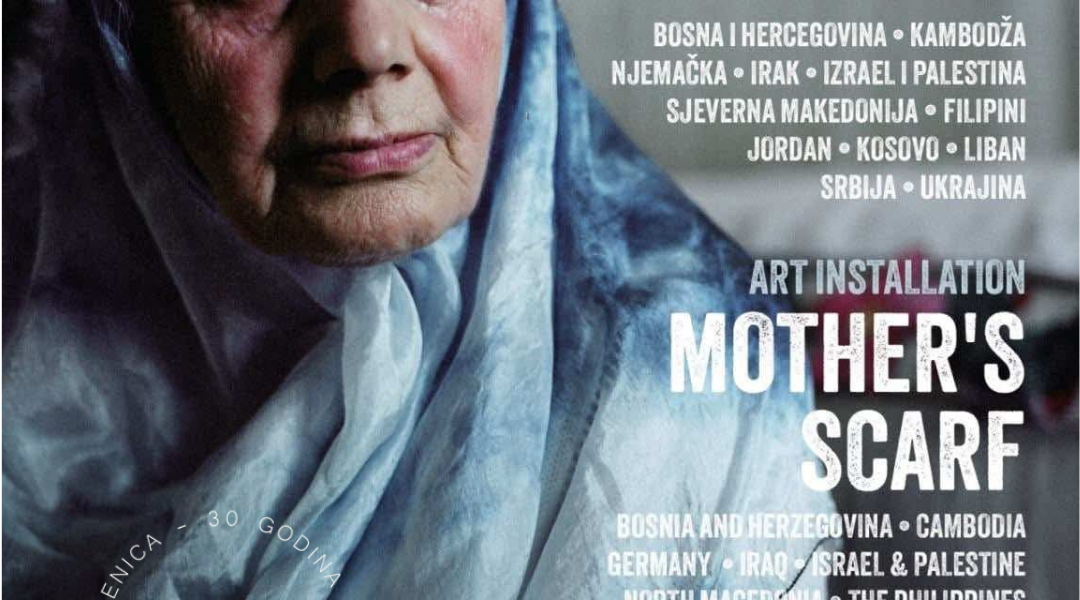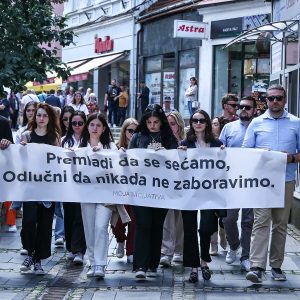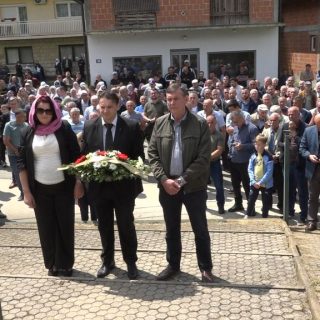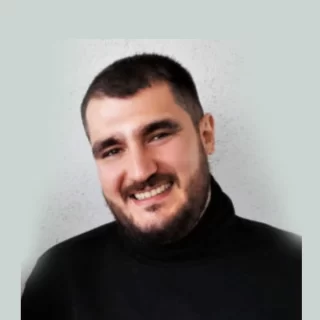Thirty Years.
It’s been thirty years since, in July 1995, sons vanished from courtyards, brothers from bedrooms, husbands from beds, neighbors from buses, students from classrooms.
Since they were killed – systematically, indiscriminately – not for what they had done, but for who they were.
Thirty years since genocide was committed in Srebrenica – a crime designed not only to kill, but to erase. To remove every trace of a people, a name, a glance – from the land, from history, and from memory.
Because when you kill a body, a name remains.
When you bury bones, photographs remain.
When you move graves, mothers remain.
And so they tried to erase even the last thing – memory.
Thirty years since mothers have walked without a gaze, without bodies, without justice.
And today, we stand in Belgrade – a city built atop the unspoken, with both feet on what has been buried.
A city where silence is loudest.
Where victims are ignored, and semantics debated.
Where cries are met with indifference.
That is why we are spreading “Mother’s Scarf” – an artivist installation made of thousands of scarves collected over the past years.
We stretch them simultaneously across dozens of cities and countries:
Sarajevo, Berlin, Prishtina, Skopje, Amman, Baghdad, Phnom Penh…
In Bosnia and Herzegovina, Serbia, Germany, Kosovo, North Macedonia, Jordan, Iraq, Cambodia, and many others.
Because memory knows no borders.
Because humanity needs no passport.
Only a part of them is here with us in Belgrade today –
but each one stands as 8,372 unanswered questions.
In every scarf, there is a life interrupted – and then attempted to be erased.
Scarves in which mothers waited for their children to return.
Scarves in which they searched mass graves.
Scarves in which they awaited verdicts that arrived decades late.
Scarves in which they survived.
Scarves in which they died – never knowing why it had to be him.
These scarves are not ornaments.
They are resistance.
Memory that pierces through forgetting.
They are not numbers.
8,372 times – one name, one life, one “I love you, Mom”, one “I want to be a teacher”, one “Don’t let them take me”, one “Tell them I’m alive.”
None of them returned.
These are the words that were never spoken.
The arms that never got to hug.
This installation stretches that memory across the main square of this city.
Belgrade – which for decades looked the other way – must now look directly into the eyes.
Not to accuse a nation – but to preserve our humanity.
Because what kills longer than a bullet is a system that refuses to acknowledge.
For thirty years, we’ve been taught that truth is dangerous.
That mentioning the names of the murdered is a “provocation.”
That remembrance is an “attack on the nation.”
But truth is not an attack.
Truth is an obligation.
Those who were killed had no justice, no forgiveness, no chance to tell their story.
So we speak.
While Belgrade still debates terminology and numbers, we tie scarves –
for each person who was bound and taken.
For each one tied into collective silence.
Each scarf is a link – between the dead and the living.
Between the past and what must come.
Between truth – and the concrete wall of denial before which we now stand.
Because genocide does not end when the killing stops.
Genocide continues while it is denied.
While it is defended.
While witnesses are threats, and perpetrators are “controversial figures” with special treatment – or worse, heroes.
Genocide continues – here, today, now –
when the President refuses to say “I’m sorry.”
When schools are silent about Srebrenica.
When society scorns those who remember.
“Mother’s Scarf” is a reminder – that we are all responsible.
And that no one should ever again be buried by earth and silence.
“Mother’s Scarf” does not ask: Who are you?
It asks: Whom are you willing to remember?
And can you be human – when it’s hardest to be?
People remember people.
So we remember.
For them.
For us.
For everything that comes after.
Thirty years after.
Dalila Koler is a young activist and new media artist from Novi Sad. Through strong engagement in the Youth Initiative for Human Rights and at international festivals, he uses various artistic disciplines, activism and work with young people as methods in the processes of transitional justice, human rights, dealing with the past and building peace in the Balkans.




